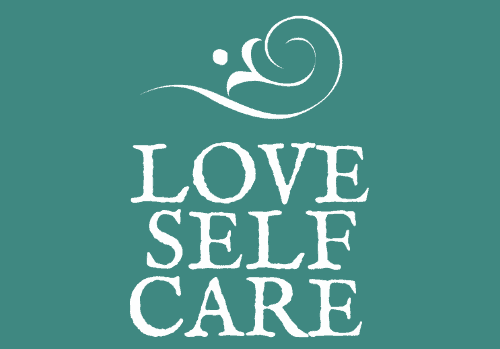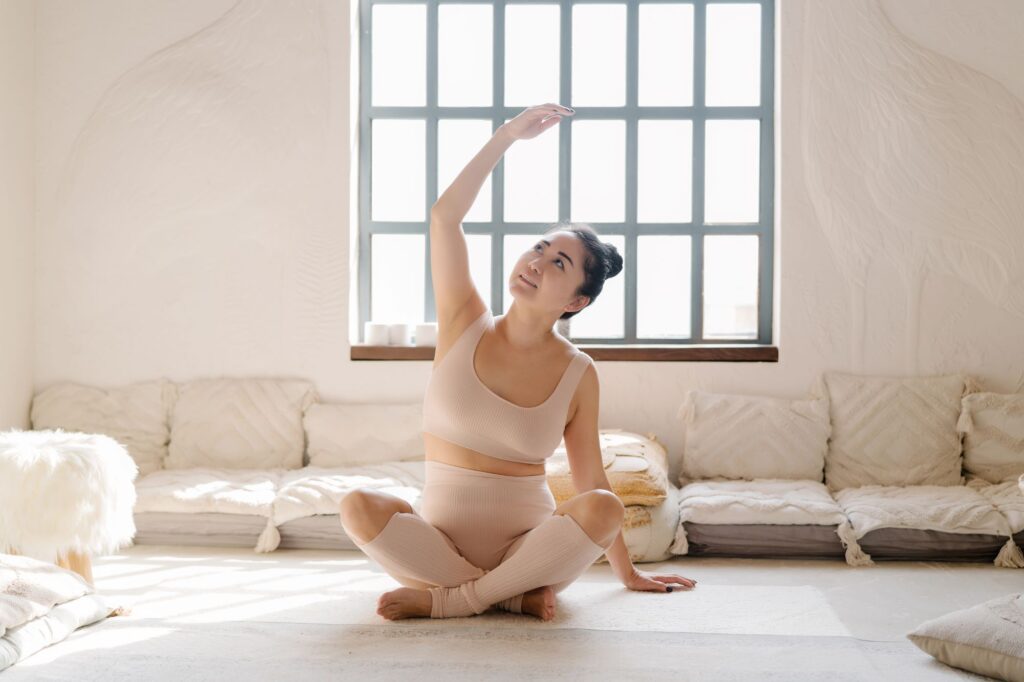
Why Do You Need a Self-Care Retreat?
Sometimes we get so busy in our day-to-day lives that the only way to restore any type of balance for ourselves, is to go all-in on a self-care retreat. This personal retreat will help you to return afterwards to your daily routines a more relaxed version of yourself.
What is a Self-Care Retreat?
A self-care retreat is a time spent purposefully to focus on you. It is a time dedicated to finding out what you need right now – which can change as life goes on. And, then actually use the knowledge of what you need now in the time you have allotted.
As far as the length of time for a wellness retreat like this, it could be a day, a weekend, or longer. The key is that it is dedicated time carved out of our busy schedules. The fact that the time is dedicated to this purpose is more important than the length of time.
Ground rules of a Self-Care Retreat are to limit the following:
- Social media
- TV watching
- Talking on the phone
- Knocking out your to-do list
- Work you don’t want to do
However, you make the rules as it is your retreat! Solo time is better than trying to do this as a group (that is where the self portion comes in) although it is possible to do both – see below for more details.
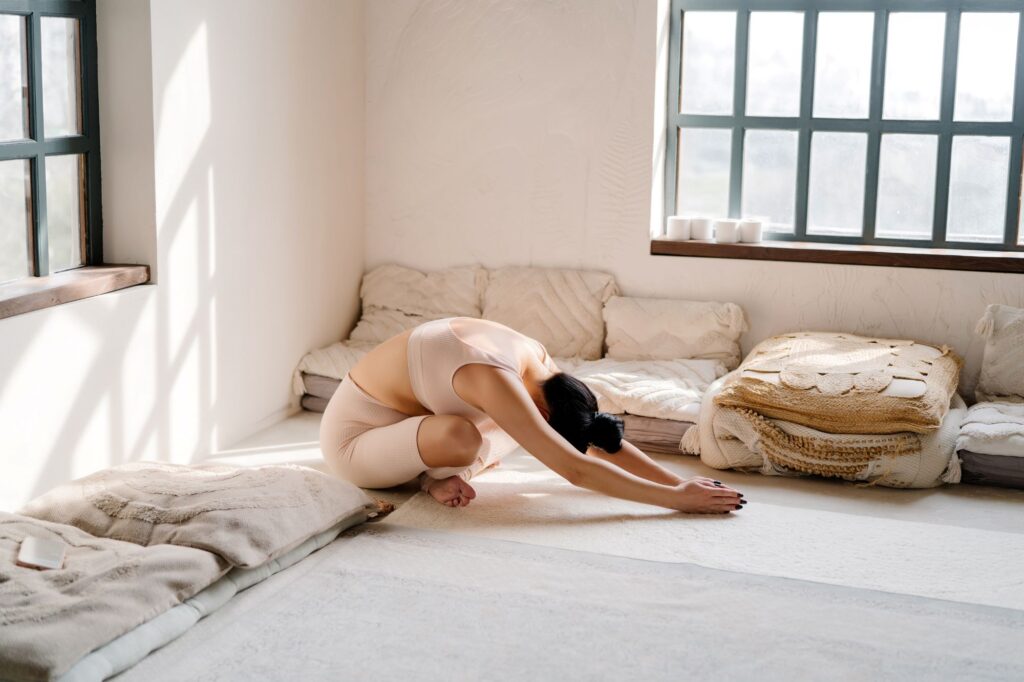
How does a self-care retreat help you?
The time you spend away from your daily routines with this type of self-care “vacation” whether done at home or away somewhere is to put your focus on you for a day. It helps you to prioritize time and dedicate a day, a weekend, or a week (a girl can dream, right?) entirely focused on whatever you want and need to do.
How to plan a self-care retreat
You want to begin by setting aside time in your calendar that is just for you. This can feel like an impossible task with today’s busy schedules but it is important.
You are also going to want to consider would you rather have the solitude of a silent meditation or the communal energy of a yoga class? It is okay to want both! Your retreat can include silence for deep reflection but also guided movement to awaken your body.
Think about other aspects you would like to include in your retreat as well. What about a mini-spa day at your home? You could create a day with silent meditation, reading inspirational self-improvement books, and then indulging in the simplicity of a warm bath.
All the while you can create an atmosphere of your choosing – maybe you want to be surrounded by flickering candles or the calming scent of essential oils. The beauty is you get to pick!
You can do accomplish more than you think from the comfort of your own home. If you don’t feel like doing yoga with other people, you can watch an online class on You Tube, for example.

What a self-care retreat could look like:
Here are some ideas for things you can do on your self-care retreat. Feel free to incorporate as many or as few of the following as you like during your time spent on retreat. These items are in no particular order.
Beginning ritual – like lighting a candle or incense – to let yourself know the time begins now
Time spent doing things you feel like doing (choose from the list below)
Ending ritual – similar to the beginning ritual. This will be something to close out the retreat. You may want to add some journaling on your impressions of the day and time spent and how you feel as well.
Things You Can Do on a Self-Care Retreat
Here are some ideas of things you can do on a self-care retreat – choose whatever sounds good to you today and write them down on the Self-Care Retreat Plan at the bottom of this page.
Beginning Ritual
- Yoga – either watch a video or do poses you know and like
- Healthy meals – during the day make sure to fuel up on healthy foods and stay hydrated
- Spa treatments whatever you can do either at home with self-care products like face masks or a massage studio (massages)
- Self-care activities and ideas (100’s of ideas linked)
- Self-care rituals like pampering yourself with the perfect bath (complete with your favorite bubble bath or bath bombs)
- Essential oils or incense
- Soothing music or apps like Calm
- Fresh air – spend time in nature relaxing
- Meditation to calm your thoughts – find out about 5 easy steps you can take to begin
- Physical activity – walk, stretch, etc.
- Herbal teas or fruit/vegetable infused waters – like the cucumber water you get at the spa
- Free time doing a creative pursuit you like – coloring, painting, writing, etc.
- Read a self-improvement book
- Read a book of poems or inspirational quotes
- Spend time working on a list book like “52 lists to Calm”
- Personal growth time focused on your goals and desires for the future
- Journaling to discover your current hopes, dreams, and worries
- Read a good fiction book
- Listen to an inspirational podcast or audiobook
- Seasonal self-care ideas based on the season you are in (lots of ideas there)
Ending Ritual
My Personal Experience with Self-Care Retreats
Personally, I find self-care retreats are a powerful tool to help me address my health (mental, physical, and emotional). This kind of retreat works well because it allows us to disconnect from the hustle of our daily lives. It also offers us the luxury of focusing solely on our personal wellbeing for a period of time.
Whether you use a vacation day, go on a yoga retreat, or simply dedicate an entire weekend to nurturing yourself doesn’t matter. What does matter is taking action for yourself by purposefully stepping away from your daily life for a moment. In doing so, you give yourself the chance to see things from a different perspective.
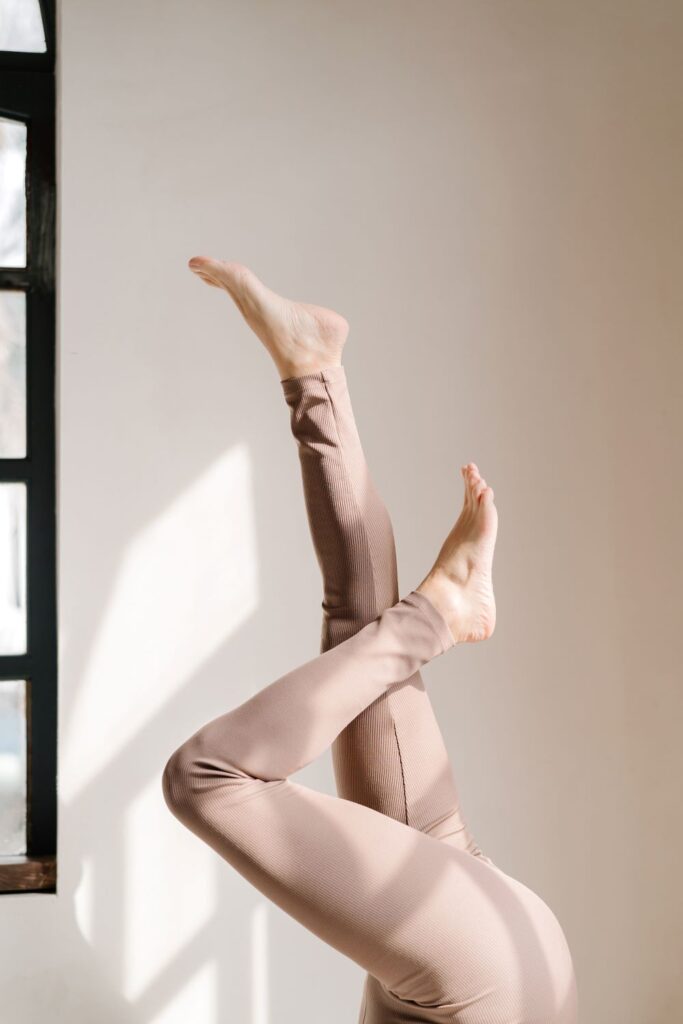
Choosing Your Retreat Focus
Whether you want to have your own personal retreat or participate in a wellness weekend, either can give you benefits tailored to different aspects of self-care. Both options offer an undisturbed space and time to engage in whatever sounds best to you.
A personal retreat can give you the solitude essential for deep reflection. This solo time can be a great way to disconnect from the busy schedules of everyday life and give you a clearer perspective on your needs at that time.
On the other hand, joining a community-based retreat can connect you with others who want a similar journey towards personal growth and mindfulness. As a group you can practice yoga in the fresh air of a beautiful forest setting, partake in healthy meals, and share your reflections in guided journal entry sessions.
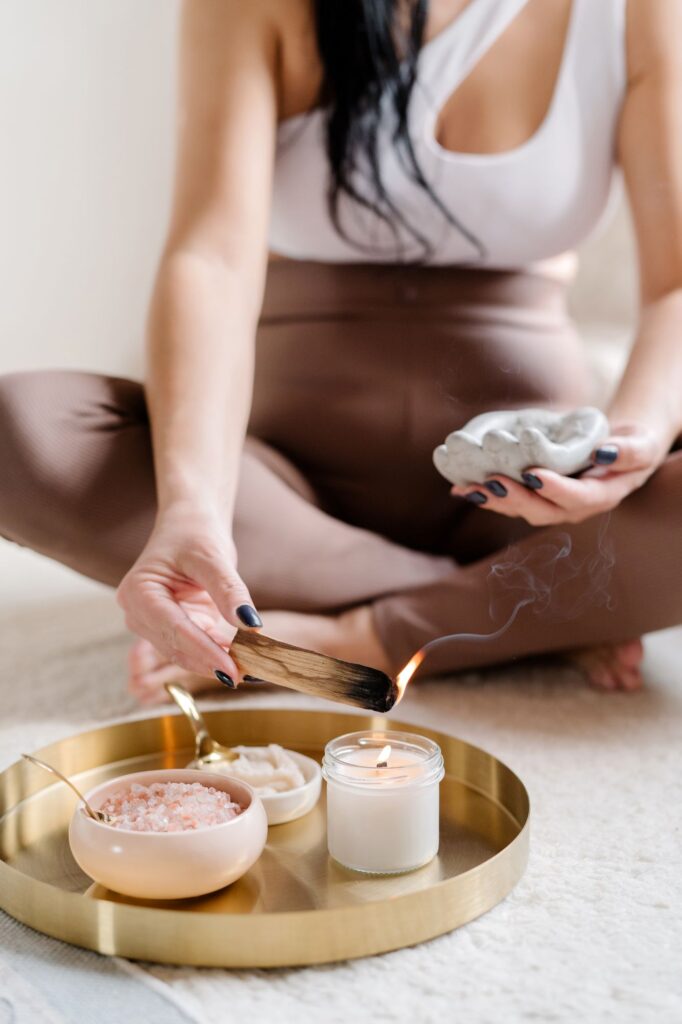
And while you are in this safe place, you learn the value of sharing experiences and learning from others. Not to mention, you are also becoming part of a support network of like minded people.
In choosing the focus of your retreat, reflect deeply on what you seek most at this moment in your life. Whether craving solo time for internal work or yearning for the support and connection of a community, let your decision guide you towards the most fulfilling experience for your mental and emotional wellbeing.
Wellness Activities to Consider Adding to Your Retreat
Long ago, I fell in love with the way I feel after a yoga session. So for me, adding yoga sessions is a great entry point to guide me to deeper introspection.
With each pose, I feel a little closer to some inner peace. So, when I considered the myriad of self-care activities for my retreat, yoga classes stood out. Yoga classes are great because they offer not just physical activity but a profound connection to the essence of self-care, taking care of you and your body.
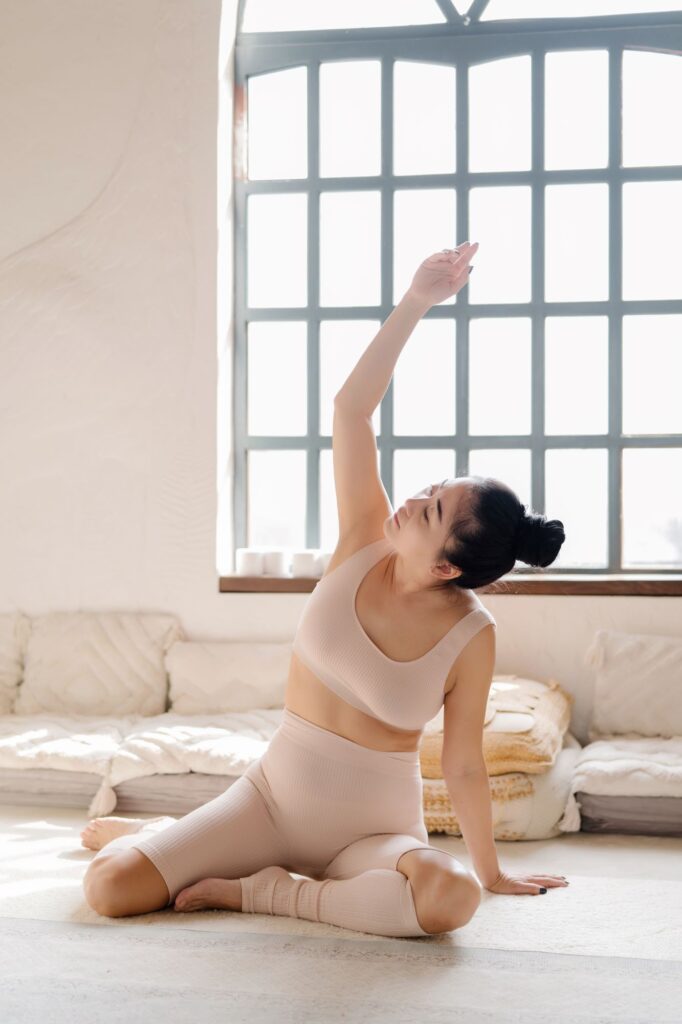
Yet, I know I want to include more than that in my retreat. Spa treatments are something I like to include as well. They give me a tactile way to explore self-care, from hot baths steeped in essential oils to massages that untangle the knots of my daily life.
And silent meditation? This is one item I always like to include as a great way to check in with myself. It can be like a beacon in the storm, offering a still point around which the chaos of the outside world could swirl without disturbing my core of calm. My activities lean heavily on personal preference. Because whatever you plan, the most authentic retreat experience comes from honoring what truly resonates within you.

Nurturing Your Body
You also want to consider what nurtures your body the most for your personal retreat. (Because having a bunch of junk food doesn’t really happily coexist with these activities and feels pretty counter productive, right?)
Prioritizing healthy meals and choosing foods rich in nutrients, can ensure your body has the energy it needs to feel well. You also want to commit to stay hydrated. Hydration keeps your cognitive functions sharp and your physical state resilient which is an excellent foundation for the day’s activities.
Lastly, try to add some physical activity. Whether it is the yoga discussed earlier or a brisk walk, whatever you do can help to circulate blood flow, invigorate your senses, and release endorphins.
All three of these enhance your overall wellness, turning the retreat into a sanctuary where you can thrive.
Choosing the Right Setting
Choosing the right place for a self-care retreat can be important for achieving the serenity you seek. A beautiful spot, whether nestled in nature or the comfort of your own home, sets the stage for transformative experiences.
An at-home retreat can offer calm without the need for travel. It can allow you to create a safe place, where you can add practices like yoga and silent meditation into your everyday life.
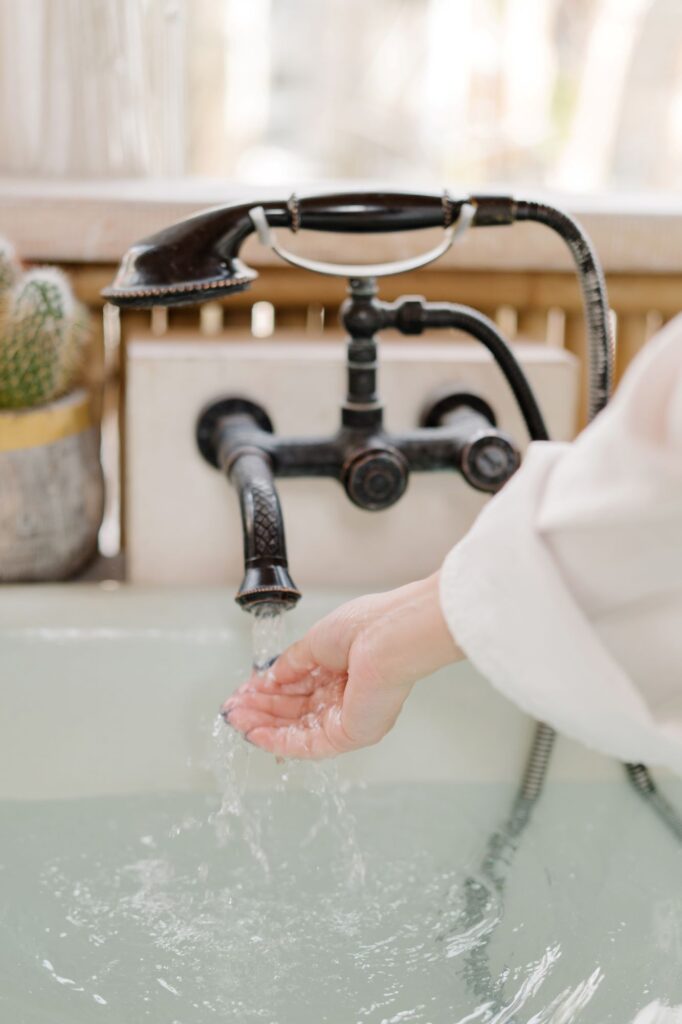
However, the allure of a retreat over an entire weekend away, surrounded by fresh air and beautiful scenery can be equally compelling. The decision of where to hold your retreat, will hinge on your personal preference for solitude or a desire to disconnect from your daily routine entirely.
Ultimately, the essence of a self-care retreat—be it a cozy at-home setting or amidst nature’s tranquility—lies in its ability to foster personal growth, enhance mental and physical health, and nurture emotional health on a deeper level.
Infusing Mindfulness and Relaxation
Journaling can unleash a cascade of thoughts and emotions buried deep inside you. This simple act can become a very powerful tool for self-reflection and personal growth. There are many different types of journaling to explore, and I’ve written more about that in this article – “What are the Different Types of Journaling and How Do I Start?”.
While you are tucked away in your safe place, you can also lose yourself in a good book and let the words to transport you to a different world for a while. I like to add books of poetry to my retreats – they are short and yet they can give you profound insights as well. (Billy Collins is one of my favorites, try “Aimless Love: New and Selected Poems”). These moments of quiet reading can give you a deeper level of understanding and connection to your inner self.

Adding solo time in nature can be important to your relaxation time, as breathing fresh air can have a healing quality of its own. “Being in Nature” discusses ways of being in nature and ideas of activities you can do on your retreat.
Such practices empower you to confront daily life from a place of strength and tranquility. These rituals, coupled with the occasional indulgence in herbal teas and warm baths, can enrich daily routines and nurture your emotional health on a profound level.
How to Keep the Calm Going by Continuing Self-Care
I hope you are either getting excited to have your own retreat or have just concluded one and are feeling a profound sense of peace. The challenge is to carry this serenity into the bustling rhythm of your daily life.
Once you have created a sanctuary within, this haven will be something you want to protect. You will have to be determined to not let it fade into the background of your everyday routine.
Setting aside time for yourself may seem like a luxury you can’t afford. But hopefully, this retreat teaches you the lesson that self-care is not an indulgence but a necessity.
Find ways to keep the self-care going, by planning ways to continue. For example, practicing yoga every morning can allow the tranquility of each session to set a positive tone for the day ahead. Physical activity, even something as simple as a brisk walk, can become a daily ritual to keep your body energized and mind clear.

Plan Ways to Bring the Lessons of the Retreat into Your Daily Life
Integrating mindfulness into your routine can be a powerful tool. Dedicating moments throughout the day for meditation, can deepen your connection to the present moment.
Creating a personal retreat doesn’t have to require an entire weekend in a secluded beautiful place. Even a well-planned vacation day can be infused with self-care practices. Each activity can serve as a stepping stone towards a deeper level of self-compassion and understanding.
To ensure these habits remain in your life, make a conscious decision to set aside free time for reading inspirational books and journaling. These acts of self-reflection allow you to explore your thoughts and emotions on a deeper level, reinforcing the insights gained during the retreat.
You may just find that the most powerful aspect of this journey was not just the temporary escape it provided but the lasting change it inspires in your daily routines—transforming them into a living, breathing extension of your retreat.
Key Ideas to Remember:
- A self-care retreat can be used for whatever we want to focus on
- Disconnecting from daily routines allows us to focus on personal growth and self-reflection
- Incorporating practices like yoga, meditation, and healthy eating can kickstart your wellness plans
Self-Care Retreat Planning Page

More Information on Retreats You Can Do:
Your Retreat – a Room of One’s Own
If you liked this article, please share on Pinterest! Thanks!
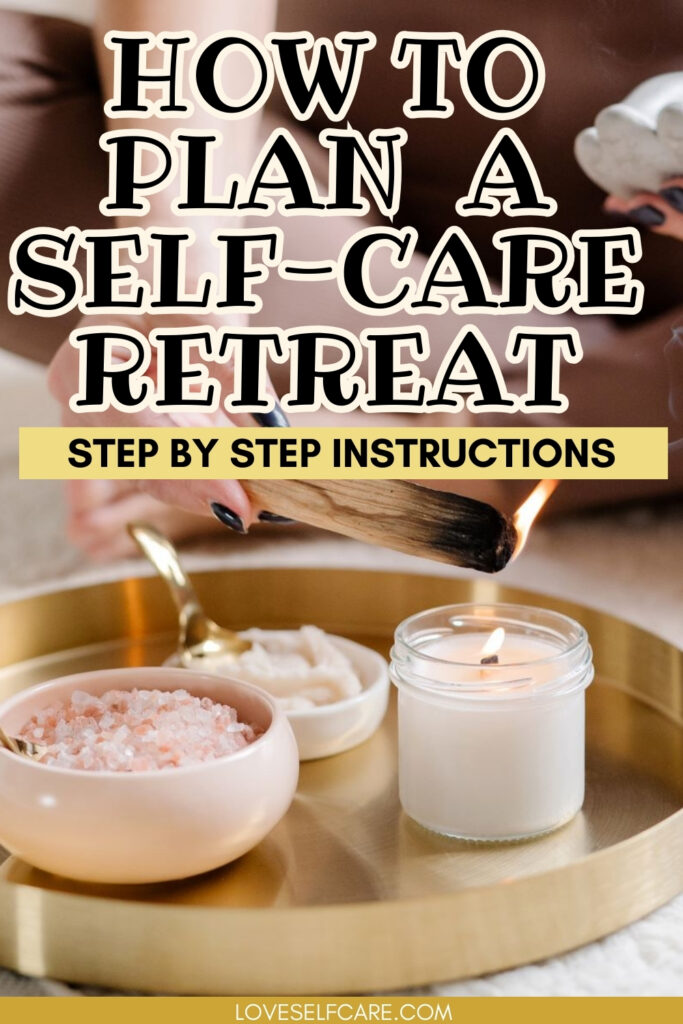
While you are here, make sure you grab your copy of the "Self-Care Mini-Guide" to help you figure out how to add self-care to your daily life. Just click the link Loveselfcare Self-Care Mini-Guide to download your guide!
